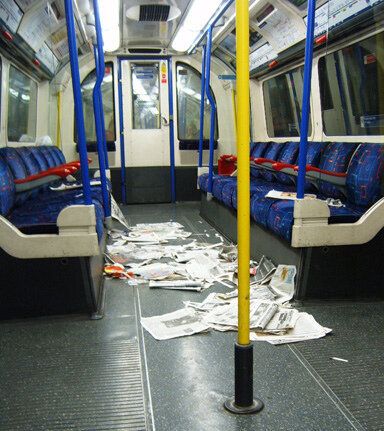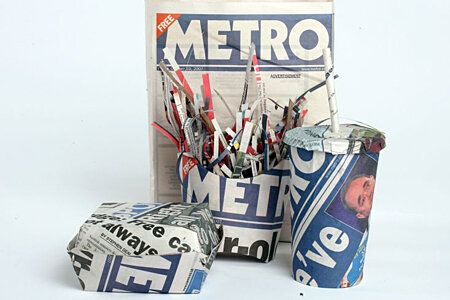As I sit, or more likely stand perpendicular and cramped, on my commute to and from work I tend to scan through the pages of the Metro or the Evening Standard nonchalantly. When I arrive at my destination, I have two primary options; put the paper in the bin, or leave it on my seat.
More often than not I consciously choose to leave it on the train in the hopes it will find itself gratefully in the hands of another passenger, rather than the ubiquitous site of a landfill.
Research conducted in 2012 shows that 68% of TfL commuters do not regard these daily newspapers as rubbish, preferring to take the selfless and altruistic route of leaving it for others.

While you, and I, may think anything is better than putting it in the bin, alas this is not the case. Not just does it inevitably end up in the landfill eventually, but it also has numerous other negative consequences, including but not limited to, raising the price of tickets due to the need for more cleaners, whom on average spend 21% of their time cleaning up newspapers.
Just under 2 million free papers are distributed in the London Underground every day. These are shared about between the 4.8 million passengers. Staggeringly large numbers when it comes to the lack of individual recycling opportunities.
However it is far from a hopeless cause. In the Chinese city of Guangzhou, with a similar 5 million daily passengers and a digestible 'Metro Daily', they have a vastly impressive 90% recycling rate.
When in 2010 the Metro was re-awarded the right to distribute their newspaper at the 250 Underground stations, Richard Perry, the Interim Managing Director of the London Underground, said: "The new deal will fund carbon-cutting projects such as making our stations more energy-efficient and will further encourage newspaper recycling with more recycling bins at key stations".
Well, seven years later, and as the current contract approaches it end, have we seen any environmental improvements?
To an extent, yes(ish). In 2012 TfL announced a plan to install 2,000 newspaper recycling bins on the trains themselves. Each carriage was to have eight collection bins, and each bin was to hold up to four newspapers.
Having said that, I'm yet to see one.
On the whole, the picture looks bleak, the current statistics don't make for light reading. On the Piccadilly, Northern and Jubilee lines alone 9.5 tonnes of newspapers are dropped everyday, of which 2.85 tonnes goes straight to landfills. That is, of the 11 lines, the 4th, 2nd, and 3rd busiest respectively.

So what does the future hold for this entirely unsustainable, irresponsible and costly part of our daily commute.
We could, like Guangzhou, hire the elderly to collect used newspapers at stations and hand them in for a pittance. Or we could take the newspapers and papier-mâché our homes for some cold winter insulation.
Alternatively, recycle bins could be introduced in underground stations. Or we could take individual responsibility and recycle the newspapers at home or at our workplace.
Whatever path is chosen, if we don't act the future is desolate to say the least. As it stands, by 2030 only 10% of rain forests will remain, 70% of the worlds plants and animals will lose their natural habitats, and by the time I have finished writing this 3 hectares of trees will have been knocked down.
While The Metro and The Evening Standard are not to blame for the global waste of paper, it is emblematic of contemporary attitudes.
Never have the three R's seemed more applicable: Reduce, reuse and recycle.